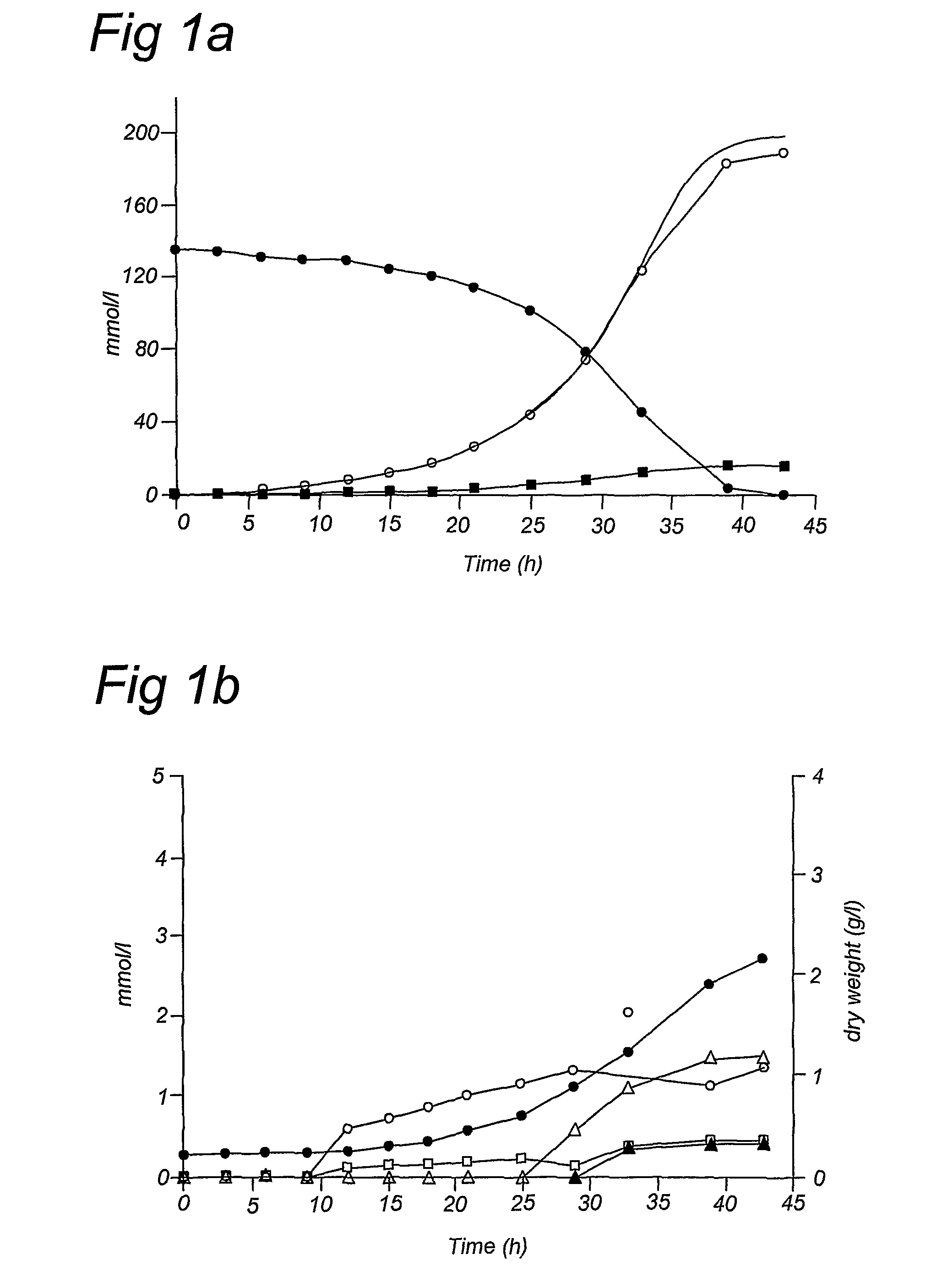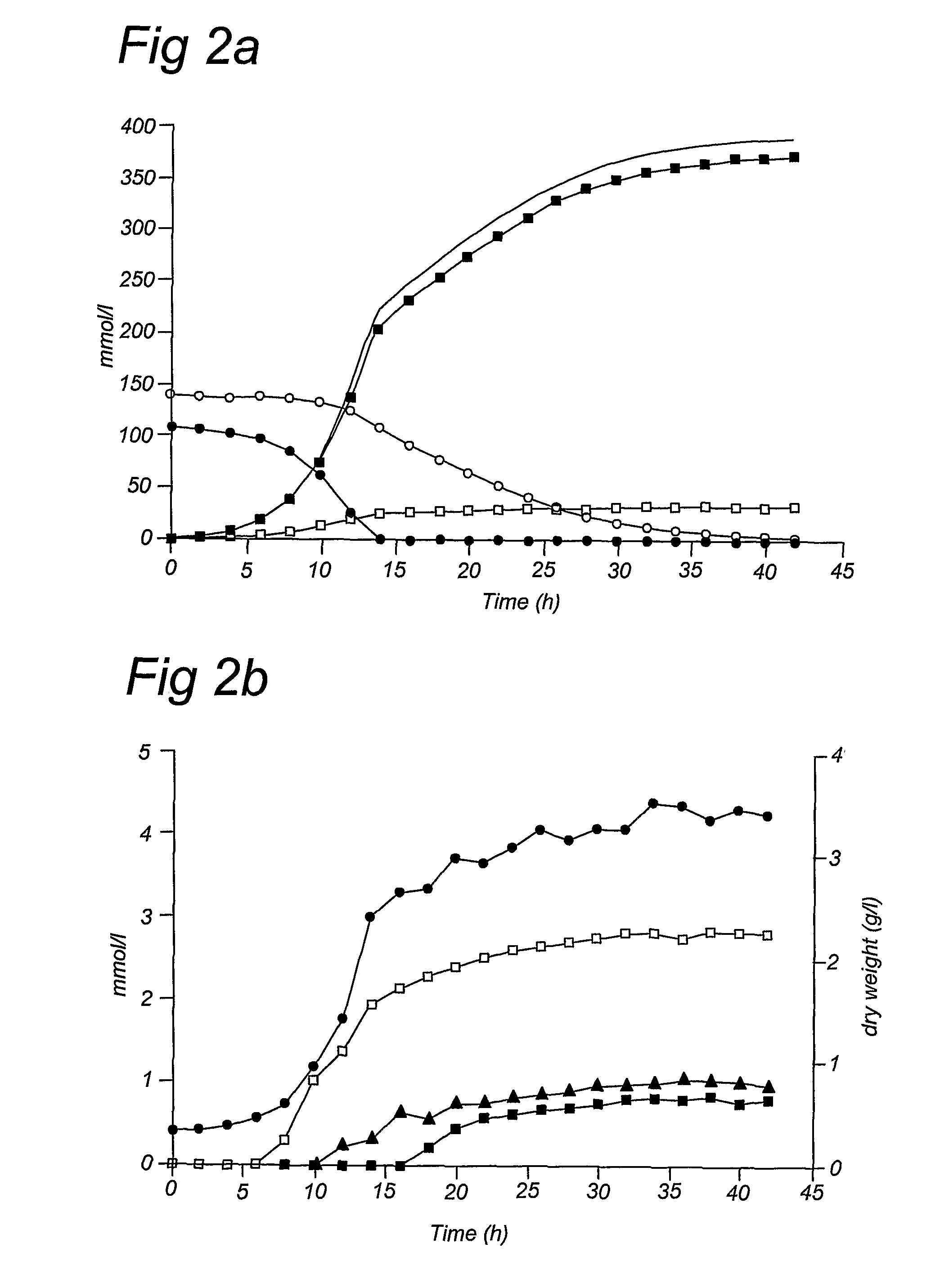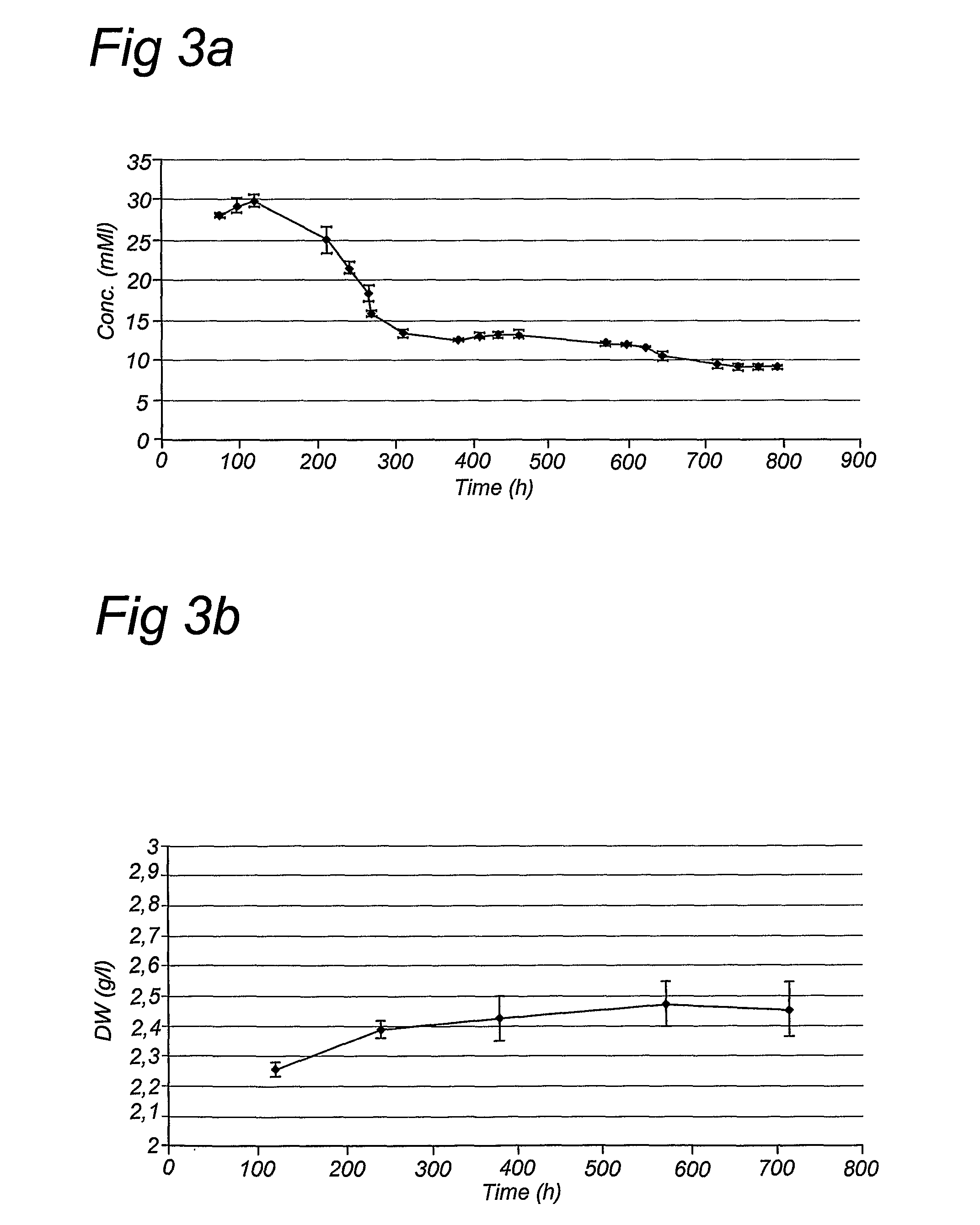Xylose-fermenting yeast engineered to increase flux of the pentose phosphate pathway
a technology of pentose phosphate and xylose, which is applied in the field of xylosefermenting yeast engineered to increase the flux of the pentose phosphate pathway, can solve the problems of not revealing which of these many alternatives actually produces an improvement, and the specific rate of ethanol production in this strain is still unacceptably low
- Summary
- Abstract
- Description
- Claims
- Application Information
AI Technical Summary
Benefits of technology
Problems solved by technology
Method used
Image
Examples
examples
1. Materials and Methods
1.1. Plasmid Construction
[0090]In order to integrate the TPI1 promoter in front of our target genes several plasmids were constructed. First the TPI1 promoter was cut as a XhoI-EcoRV fragment from pYX012-Aat (A. A. Winkler, derivative of pYX012 (R&D Systems, Minneapolis, Minn., USA)) and ligated to pUG6 [3] cut with SalI-PvuII. This gave us pUG6PTPI, which could then be used to PCR a Kanlox-PTPI integration cassette.
[0091]In cases were putative ORF's were located very close to the ATG of the target genes, we cloned those genes into pUG6PTPI. A 0.8 kb RPE1 fragment and a 2.3 kb TKL1 fragment were isolated from gel and cut with EcoRI and XhoI (present in the primers, see Table 3) and ligated into pUG6PTPI digested with EcoRI-SalI, resulting in PUG6PTPI-RPE1 and pUG6PTPI-TKL1.
[0092]In order to increase the activity of xylulokinase the XKS1 gene was amplified by PCR as a SpeI-SalI fragment (sites in the primers, see Table 3) and cloned into p415ADH [4] cut with X...
PUM
 Login to View More
Login to View More Abstract
Description
Claims
Application Information
 Login to View More
Login to View More - Generate Ideas
- Intellectual Property
- Life Sciences
- Materials
- Tech Scout
- Unparalleled Data Quality
- Higher Quality Content
- 60% Fewer Hallucinations
Browse by: Latest US Patents, China's latest patents, Technical Efficacy Thesaurus, Application Domain, Technology Topic, Popular Technical Reports.
© 2025 PatSnap. All rights reserved.Legal|Privacy policy|Modern Slavery Act Transparency Statement|Sitemap|About US| Contact US: help@patsnap.com



